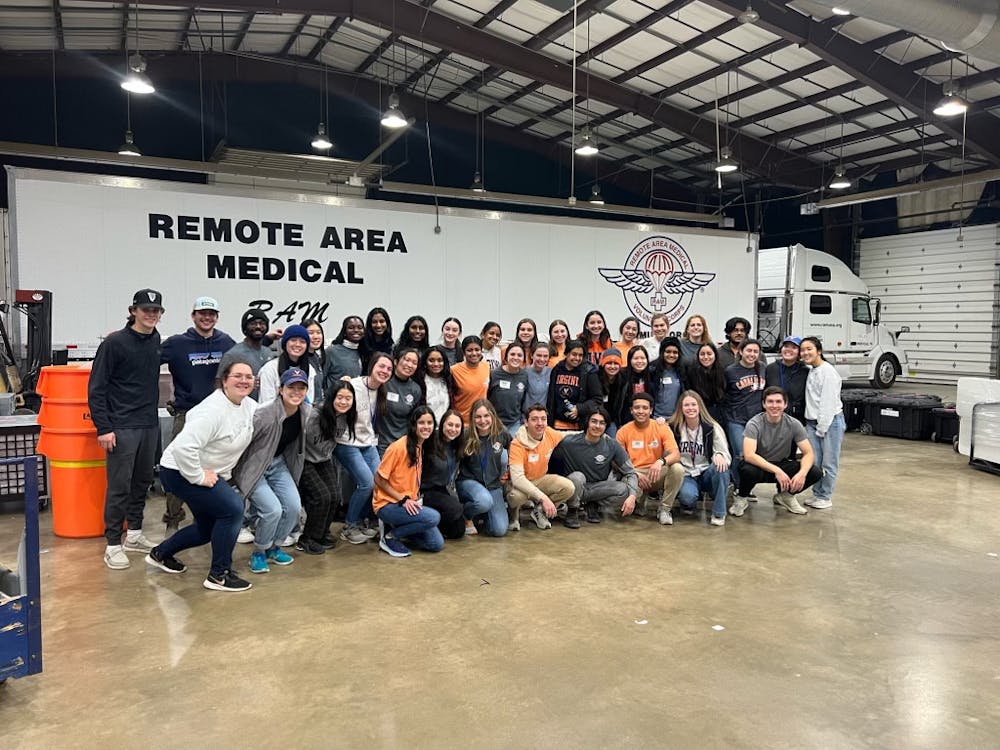Last April, the U.S. Department of Energy announced the release of its first annual Solar District Cup Collegiate Design Competition, and since then, University students interested in solar design have had the opportunity to get involved with the competition and work on a real life solar energy project. Ruijie “Roger” Zhu — team leader and doctoral student in mechanical and aerospace engineering — pulled together a multi-disciplinary team for the District Solar Cup Competition composed of chemistry doctoral student Zhongwen Luo, Engineering undergraduate student Catlinh Nguyen and Batten undergraduate student Laura Guerrero.
The Solar District Cup Challenge is designed to challenge college graduates and undergraduates to rethink the way solar energy is designed and used. For the competition, teams around the country are tasked with building solar energy designs to be used in a real-life setting. As the only team in Virginia to advance to the finals, Zhu and his team have been tasked with designing a rooftop solar energy system for a five-block site in Arlington, Va. They hope to achieve a carbon-neutral system at the Crystal Parks, Va. site that positively interacts with the surrounding local community.
“We looked up the local development and policies, making sure that we're in agreement with their major direction,” Zhu said. “They definitely mentioned at our local annual report that they want to turn the county into a carbon neutral, renewable community.”
The team has conducted an environmental impact report to further this goal. They took into consideration the impact the panels will have on local airports, including Dulles International Airport and Ronald Reagan Washington National Airport, as the light reflected from the panels could be a potential visual hazard for pilots. Both airports have already arranged new flight patterns around the buildings, so the team no longer has to worry about those negative impacts.
The team has also conducted a number of simulations to ensure maximum productivity of the panels. The next step will be to add battery storage to the design to make the power supply more reliable by allowing energy to be stored in the battery. Since battery storage is an emerging trend in the solar energy industry, adding one into their design will likely look good in the judges’ eyes.
Since their design is being created for a specific location, the team hopes the plans appeal to the community on multiple levels. In the future, they are hoping for a more robust financial analysis of the project.
“We want to make sure that this whole solar project is not just appealing to people because of the renewable title but also [because] it's financially beneficial to the stakeholders,” Zhu said.
The team has been working with Nick Ford, director of engineering at Hexagon Energy, a Charlottesville-based solar energy company. Roger, who was volunteering with Hexagon, brought Ford into the project as a mentor when the competition was announced. Throughout the process, Ford has taken a relatively hands-off role to ensure the students do all the work on the project, though he has helped with smaller issues, such as understanding the real world engineering solar software.
“[I help] them when they reach sticking points so that they don't have to spin their wheels on something that could be a pretty simple fix,” Ford said. “I'm trying to be pretty hands off and find a solution quickly.”
In correspondence with Hexagon Energy and U.Va. Sustainability, each member of the team brings their own knowledge of renewable energy, engineering, policy and solar design to the project. The multi-disciplinary combination allows the team to work on the project from a variety of angles.
According to the U.S. Department of Energy, the best design will minimize cost and produce the most energy.
“This is determined by a techno-economic analysis conducted by students and evaluated by judges,” the U.S Department of Energy’s website said. “The goal is to design, model and present the most reliable, resilient and cost-effective system possible.”
All of the software needed to create the project is funded by the competition, and one of the biggest parts of the competition is the development of the competitors' knowledge of solar energy and power. By allowing students to work on a real life project, the competition helps them deepen their understanding of solar energy design and forces them to overcome real logistical challenges that appear during the design process. While the team's project is designed specifically for the Arlington rooftop, according to Roger, the general principle of designing rooftops is easily transferable.
“I can see those skills and knowledge be easily transferable to a much smaller sized project because I know the buildings we have for our competition is much bigger than the classroom students here,” Roger said. “If U.Va. has any plan for a solo project, we might be able to provide our knowledge and expertise on that.”
The team will travel to the Solar and Energy Storage Southeast Conference in Atlanta, Ga. on April 19 to present their final design.





